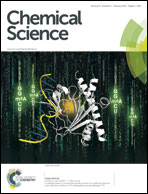Abstract
One-electron oxidation of two series of diaryldichalcogenides (C6F5E)2 (13a–c) and (2,6-Mes2C6H3E)2 (16a–c) was studied (E = S, Se, Te). The reaction of 13a and 13b with AsF5 and SbF5 gave rise to the formation of thermally unstable radical cations [(C6F5S)2]˙+ (14a) and [(C6F5Se)2]˙+ (14b) that were isolated as [Sb2F11]− and [As2F11]− salts, respectively. The reaction of 13c with AsF5 afforded only the product of a Te–C bond cleavage, namely the previously known dication [Te4]2+ that was isolated as [AsF6]− salt. The reaction of (2,6-Mes2C6H3E)2 (16a–c) with [NO][SbF6] provided the corresponding radical cations [(2,6-Mes2C6H3E)2]˙+ (17a–c; E = S, Se, Te) in the form of thermally stable [SbF6]− salts in nearly quantitative yields. The electronic and structural properties of these radical cations were probed by X-ray diffraction analysis, EPR spectroscopy, and density functional theory calculations and other methods.

- This article is part of the themed collection: Selenium & Tellurium chemistry at the beginning of the 3rd millennium: a celebration of ICCST

 Please wait while we load your content...
Please wait while we load your content...